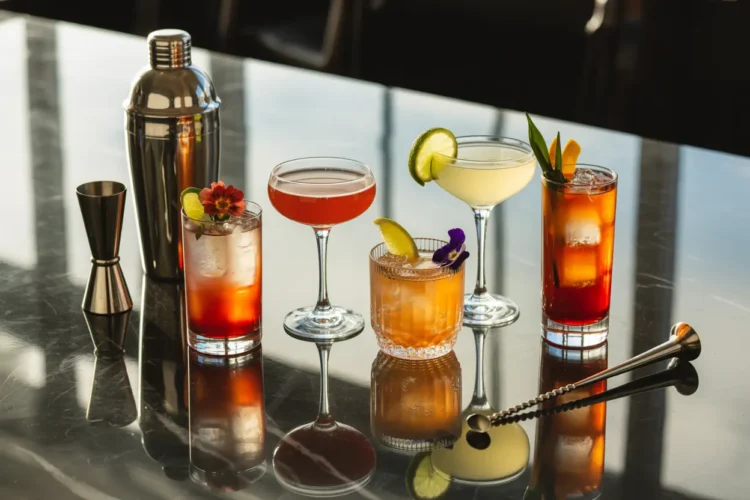Ready to dive into sophisticated non-alcoholic cocktails? Mocktail mixology has evolved far beyond sugary sodas into craft beverages that rival alcoholic cocktails in complexity and presentation. This guide transforms beginners into confident home mixologists capable of creating restaurant-quality mocktails.
What Makes Great Mocktails
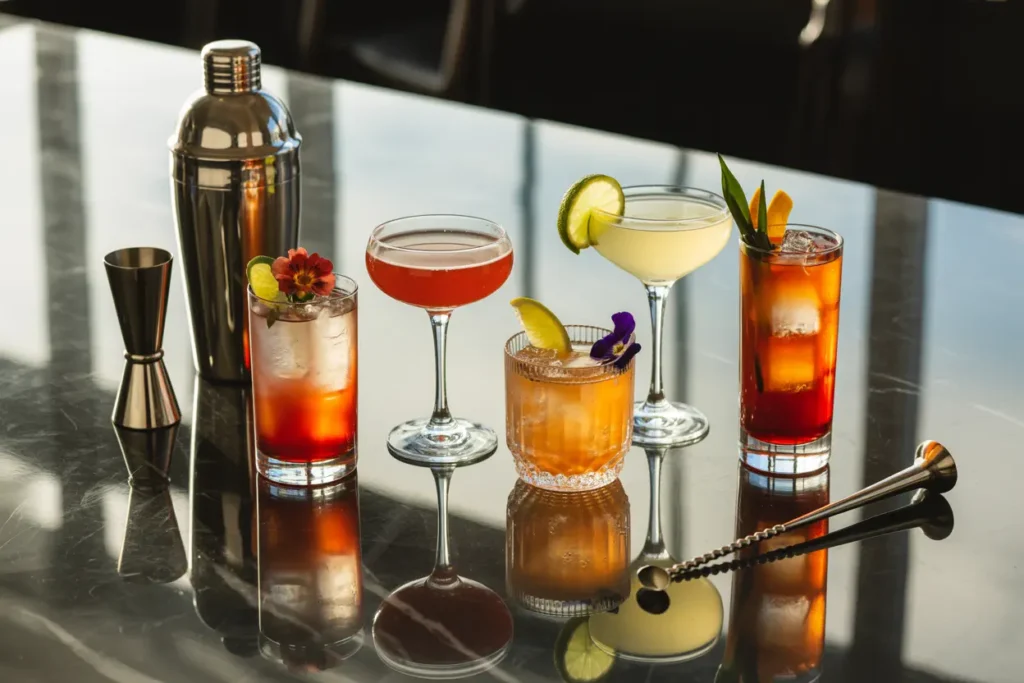
Exceptional mocktails balance strong, sour, sweet, and bitter flavors just like alcoholic cocktails. Without alcohol for complexity, we layer flavors through fresh ingredients, interesting textures, and aromatic elements. Quality mocktails encourage slow sipping rather than quick gulping, incorporating bitterness from quality bitters, carbonation fizz, or aromatic citrus oils.
The mocktail movement reflects cultural shifts – non-alcoholic beverage sales increased 30% in the past year as more people embrace “sober curious” lifestyles. Today’s consumers expect sophistication, driving innovation in non-alcoholic spirits, artisanal bitters, and specialty syrups specifically for mocktails.
🌟 What’s Your Perfect Mocktail Style?
1. What’s your preferred flavor intensity?
2. Which ingredient appeals to you most?
3. What’s your ideal drinking occasion?
Essential Tools and Equipment
| Tool | Priority | Price Range | Primary Use |
|---|---|---|---|
| Cocktail Shaker | Essential | $15-50 | Mixing, chilling, aerating |
| Jigger | Essential | $8-25 | Precise measurements |
| Muddler | Essential | $10-30 | Releasing herb/fruit flavors |
| Bar Spoon | Nice-to-have | $8-20 | Stirring, layering |
| Strainer | Nice-to-have | $10-25 | Removing ice/pulp |
| Citrus Juicer | Nice-to-have | $15-40 | Fresh juice extraction |
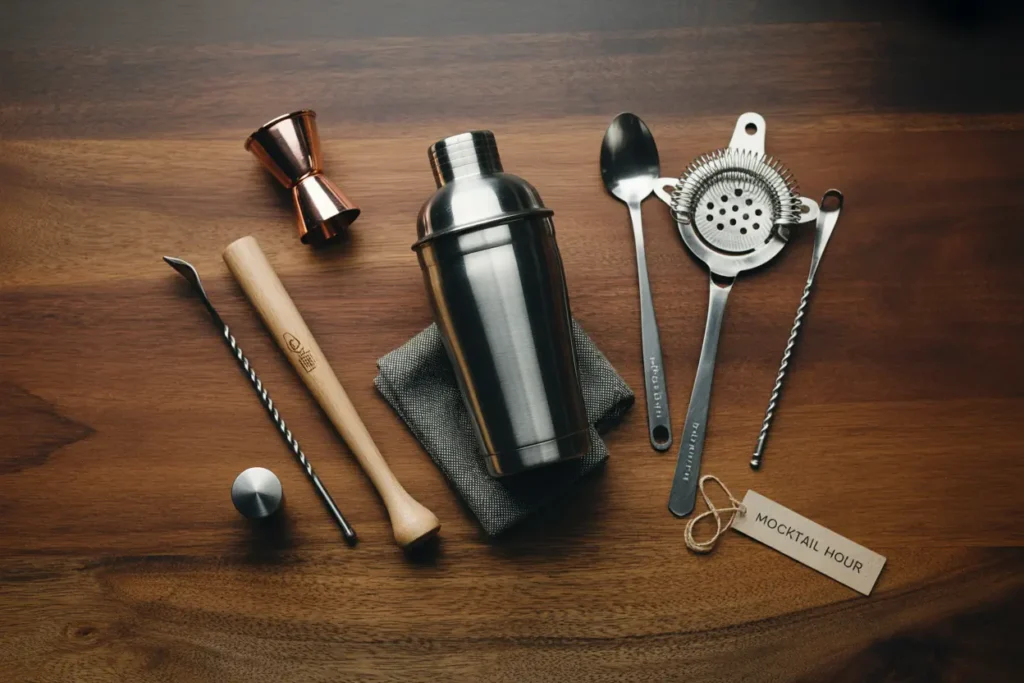
Glassware Guide
| Glass Type | Best For | Capacity | Key Benefits |
|---|---|---|---|
| Rocks Glass | Spirit-style mocktails | 6-8 oz | Aroma concentration, large ice |
| Highball | Carbonated drinks | 10-12 oz | Carbonation retention |
| Coupe | Elegant presentations | 5-7 oz | Sophistication, foam showcase |
| Wine Glass | Spritz-style mocktails | 8-10 oz | Aroma enhancement |
Fundamental Techniques
The 4:1:0.5 Formula
Master mixologists use this basic ratio: 4 parts base liquid, 1 part sour component, 0.5 parts sweet element. Example: 4 oz club soda + 1 oz lime juice + 0.5 oz simple syrup creates a balanced foundation for any mocktail.
Shaking vs. Stirring
Shake when you need: Quick chilling, aeration/foam, combining different densities, integrating citrus or cream. Stir when you want: Clarity, gentle combining, preserved carbonation, silky textures.
Proper Muddling
Use gentle pressure with a twisting motion for herbs to release oils without shredding. Fruits need firmer pressure to break the skins and release juices. Always muddle in a serving glass when possible.
Key Ingredients for Success
Base Liquids
| Category | Options | Flavor Profile | Best Uses |
|---|---|---|---|
| Fresh Juices | Orange, cranberry, pineapple, grapefruit | Bright, acidic, fruity | Primary flavors, sour component |
| Sparkling | Club soda, tonic water, ginger beer | Neutral to complex | Texture, carbonation |
| Alternative | Tea, coffee, coconut water | Complex, varied | Unique bases, body |
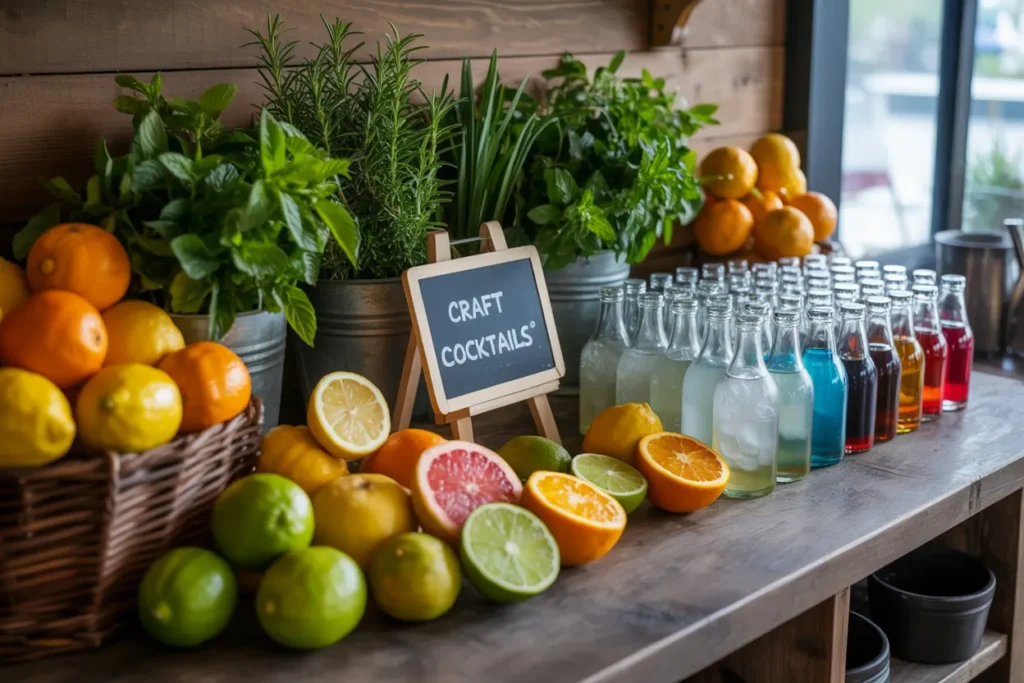
Flavor Enhancers
| Ingredient | Function | Storage | Shelf Life |
|---|---|---|---|
| Simple Syrup | Sweetener base | Refrigerated | 2-4 weeks |
| Fresh Herbs | Aromatics | Refrigerated in water | 5-7 days |
| Citrus Juice | Sour component | Refrigerated covered | 24-48 hours |
| Bitters | Complexity | Room temperature | Indefinite |
| Shrubs | Acidity + sweetness | Refrigerated | 3-4 weeks |
Advanced Ingredients
- Non-alcoholic spirits (Seedlip, Ritual, Lyre’s) provide botanical complexity
- Shrubs offer vinegar-based tang that mimics alcohol’s bite
- Quality bitters add sophistication in drops, not ounces
- Seasonal herbs (mint, basil, rosemary) provide fresh aromatics
Understanding Flavor Balance
Great mocktails incorporate all five taste elements:
- Sweet: Natural fruit sugars, honey, agave
- Sour: Fresh citrus, vinegars, tart fruits
- Bitter: Quality bitters, tonic water, citrus peels
- Salty: Rim salt, celery salt, saline solution
- Umami: Tomato juice, mushroom syrups (for savory mocktails)
Create complexity through texture variations (smooth + fizzy), aromatic layers (herb oils + citrus zests), and time-release flavors (muddled ingredients that evolve).
Popular Mocktail Categories
Fruit-Based Refreshers
Perfect for refreshing summer drinks, these showcase seasonal produce. Berry mocktails work with muddling, citrus-forward drinks balance sweet and tart, tropical combinations use coconut water bases.
Herb and Botanical Blends
Sophisticated options featuring mint (cooling, universal), rosemary/thyme (earthy, pine-like), and basil varieties (sweet, Thai, purple for color).
Sparkling Options
Celebration-worthy drinks using premium sparkling water. Consider Italian aperitivo-style drinks that encourage slow sipping, following benefits of hydration principles.
Spirit-Style Mocktails
Using non-alcoholic spirits to recreate classic experiences. Adjust ratios for NA spirits’ lighter body, enhance mouthfeel with egg white foams or sparkling elements.
Advanced Professional Techniques
Custom Syrups
- Herb syrups: Steep fresh herbs in hot simple syrup 10-15 minutes
- Spice syrups: Toast whole spices before adding to syrup for deeper flavor
- Fruit syrups: Strain through fine mesh to prevent spoilage
Oleo Saccharum
Traditional technique extracting citrus oils with sugar. Muddle citrus peels (colored part only) with sugar, let sit overnight. Creates concentrated citrus essence without acidity.
Foam Techniques
Egg white: Dry shake first, then with ice for stable foam Aquafaba: Use chickpea liquid for vegan alternative, requires longer shaking
Presentation and Garnishing
Ice Strategy
- Large cubes: Slow melting for spirit-forward mocktails
- Standard cubes: General use, moderate dilution
- Crushed ice: Rapid chilling, higher dilution for refreshing drinks
- Specialty ice: Freeze herbs/fruits for ice cubes with a twist
Garnish Techniques
- Herb garnishes: Clap gently to release oils before adding
- Citrus garnishes: Express oils by squeezing peels over the drink surface
- Rim decorations: Sugar for citrus drinks, salt for savory, spices for warming
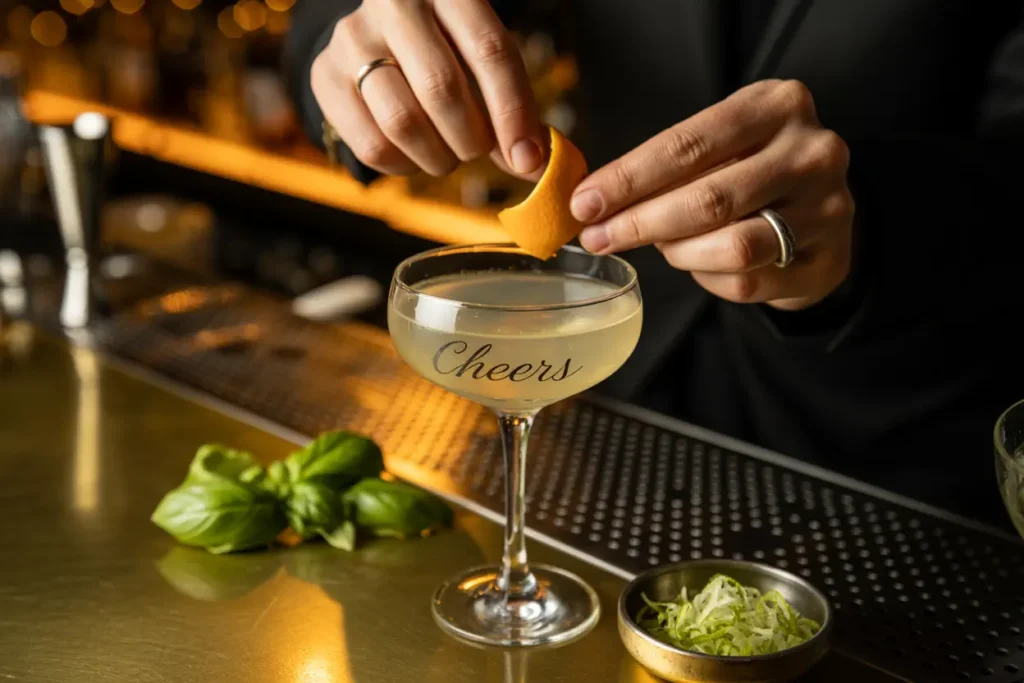
Common Mistakes to Avoid
| Problem | Cause | Solution |
|---|---|---|
| Over-sweetening | Too much sugar/fruit juice | Start with less, balance with acid |
| Watery drinks | Poor ice quality/timing | Use filtered water, larger cubes |
| Flat flavors | Missing acidity | Add citrus juice or shrubs |
| Poor presentation | Wrong ice/garnish | Match ice to drink style |
Home Bar Setup
🍹 Mocktail Ratio Calculator
Adjust the sliders to see how different ratios affect your mocktail balance:
Flavor Profile: Balanced and refreshing
Essential Shopping List
Base liquids: Club soda, tonic water, ginger beer, lime/lemon/orange juice.
Sweeteners: Simple syrup, honey, agave.
Enhancers: Quality bitters, fresh herbs, citrus for zesting
Storage Guidelines
| Ingredient | Storage Method | Quality Signs |
|---|---|---|
| Fresh Citrus | Whole, refrigerated | Firm skin, bright color |
| Herbs | In water, refrigerated | Vibrant color, crisp texture |
| Syrups | Sealed, refrigerated | Clear, no mold |
| Sparkling Water | Cool, sealed | Strong carbonation |
Hosting Groups
Batch Preparation
- Pre-mix non-carbonated ingredients up to 24 hours ahead
- Add sparkling elements just before serving
- Prepare garnishes and rim decorations in advance
- Create concentrated formulas for guest customization
Self-Service Setup
Design a summer beverage bar with logical ingredient grouping, portion control tools, and clear labeling.
Food Pairings
- Light, citrusy mocktails: Seafood, salads, light appetizers
- Herb-forward: Grilled vegetables, Mediterranean dishes
- Fruit-heavy: Spicy foods, rich cheeses, desserts
Consider barbecue event planning principles for larger gatherings.
Non-Alcoholic Spirits
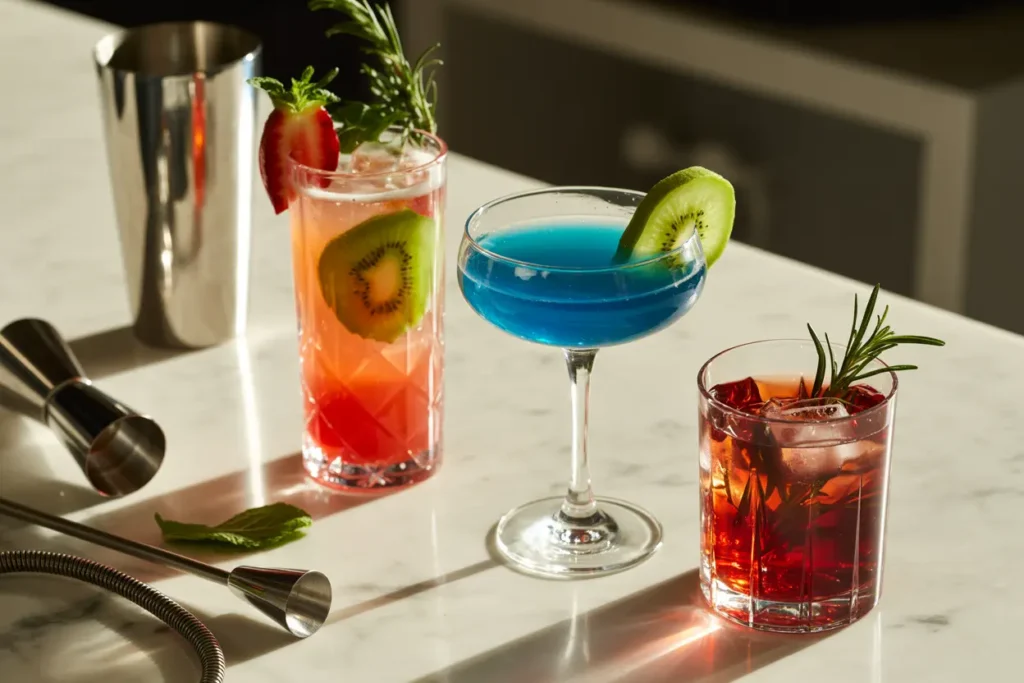
| Type | Flavor Profile | Best Uses | Top Brands |
|---|---|---|---|
| NA Gin | Botanical, juniper | G&T adaptations | Seedlip, Ritual |
| NA Whiskey | Smoky, vanilla, oak | Spirit-forward drinks | Lyre's, Monday |
| NA Tequila | Earthy, agave | Margarita-style | Ritual, Free Spirits |
| NA Rum | Tropical spices, vanilla | Mojitos, tropical | Lyre's, Ritual |
Frequently Asked Questions
📊 What's Your Biggest Mocktail Challenge?
Help us understand what mocktail makers struggle with most:
Q: How long do ingredients last? Fresh citrus juice: 24-48 hours. Homemade syrups: 2-4 weeks refrigerated. Fresh herbs: 5-7 days properly stored.
Q: Can I make mocktails ahead? Pre-mix non-carbonated ingredients up to 24 hours ahead. Add carbonation just before serving.
Q: How do I prevent over-sweetening? Start with less sweetener, balance with acid, add bitter elements, and use naturally tart fruits.
Q: Are non-alcoholic bitters alcohol-free? Traditional bitters contain trace alcohol (like vanilla extract). Truly alcohol-free options are available for those requiring completely alcohol-free beverages.
Conclusion
Mastering mocktail mixology creates sophisticated beverages rivaling any cocktail experience. Focus on the 4:1:0.5 ratio, invest in quality tools and fresh ingredients, practice proper techniques, and use garnishes strategically. Start with simple recipes, master basic techniques, then experiment with seasonal ingredients.
Whether hosting summer barbecue parties or creating fruit-infused water drinks, these principles help create memorable experiences everyone can enjoy. Explore seasonal cocktail pairings and creative mocktails to expand your repertoire.
Consider incorporating local ingredients and following summer drink trends while understanding the science of flavor to create truly exceptional non-alcoholic beverages.
Ready to start? Begin with ingredients you have, focus on basic techniques, and gradually expand your repertoire. The world of sophisticated non-alcoholic beverages awaits!

